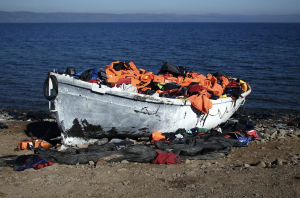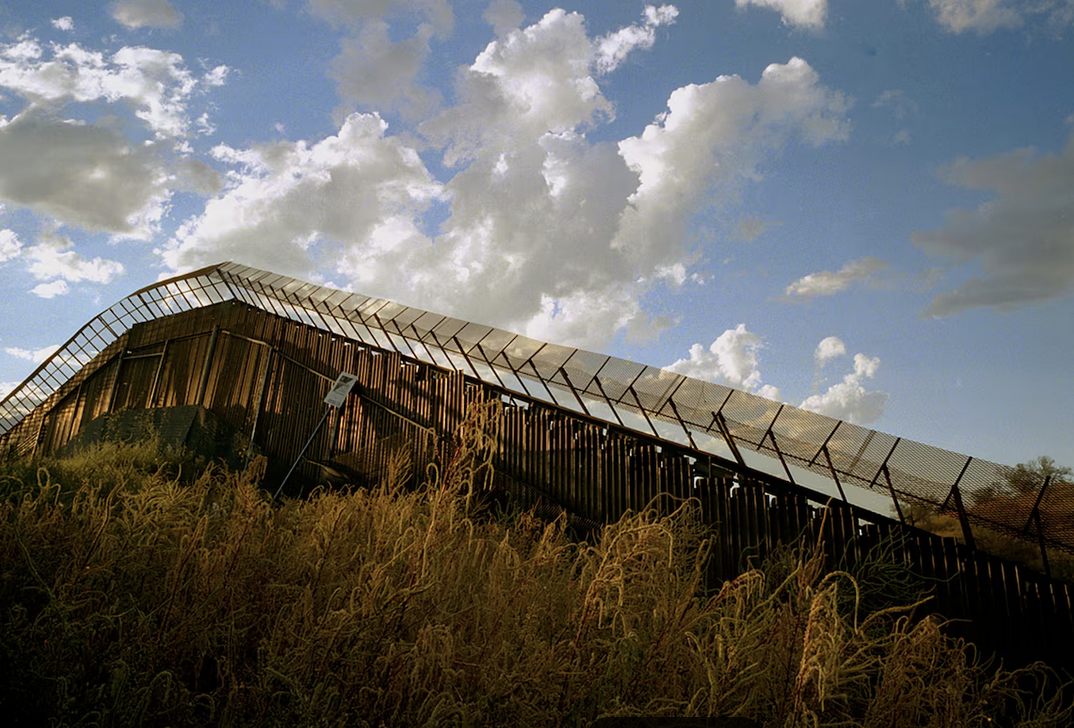Border fence, Nogales AZ
Background and photo source: National Geographic
One of the biggest issues in the recent U.S. presidential election was illegal immigration, particularly across our southern border
Having vilified these people, mostly of Hispanic origin, the newly (re-)elected president, Donald Trump, promises to start mass deportation to their countries of origin in Latin America. Many of these families have each been paying the equivalent of tens of thousands of dollars to “coyote” smugglers, who promise to ferry them through Mexico to the U.S.

Crossing a river in Panama
European countries face a similar problem. Africans, particularly those living in drought-, famine- and war-ravaged areas near the Sahara Desert, try a dangerous open-boat passage across the Mediterranean to Italy, dispersing northward from there.

Migrant boat with life jackets, Greece
Even if they can find work, it’s no guarantee of a decent life.

Dwelling of a Nigerian immigrant in Spain
Others, from Mideastern nations in turmoil, head toward eastern and central Europe, as did their ancestors over 6,000 years ago. History is repeating itself here, as Europeans are a melting plot of ancient bloodlines from Africa, the Middle East and today’s Russia.

Enhanced rock carvings in Sweden from ancient African immigrants
Immigration across transnational borders has been a thorny issue ever since improved modes of transportation (steamships, railroads, motor vehicles) made such journeys tolerable. The United States, at one time a nation of immigrants, has had quotas on and off since the late 1800’s, often favoring those of northern European descent, to the exclusion of other Europeans or of Asians.

Asian immigrant processing center, Angel Island CA ~1900
Full disclosure: both of the author’s parents immigrated to the U.S. from Europe. My father, from Nürnberg, Germany, moved to the U.S. at age 19, a few years before Hitler’s rise to power. My mother, a Jew from Romania, arrived at the tender age of 9, along with her mother and siblings, soon after World War I.

Author’s mother Devorah (Doris) on left
Now imagine an open-boat passage to the 24th-century Antarctica of Erebus Tales. Yes, it is then ice-free, but there are no docks for ships to moor, nor shelter to house these uprooted people. They are fleeing southward from Australia, New Zealand, Chile, Argentina and southern Africa, as these lands become gradually uninhabitable due to global warming and rising sea levels. What’s more, unlike European immigrants to America, who often had a relative’s letters to paint a rosy picture, Antarctica is uncharted territory.
Likewise, those living in the northern hemisphere, by far the larger landmass, push relentlessly northward over multiple generations, gradually overrunning whatever barriers that countries in more temperate zones may try to erect. The present United States, in the author’s imagination, has become largely uninhabitable. Many Americans have migrated to Canada, the home of Keltyn Sparrowhawk, her sponsor Sir Oscar Bailey, and other characters in Erebus Tales.
Bottom line on forced migration in the face of ongoing climate change: “You ain’t seen nothing yet.”

